Children’s books about poverty and homelessness are important. For one, kids need to see themselves in stories. Reading about someone who is also poor like you are is affirming. And for those kids who don’t know what poverty or homelessness is like, these stories build empathy and understanding.
Here’s a list of excellent children’s books about poverty, being poor, and being homeless, which is also called unhoused.
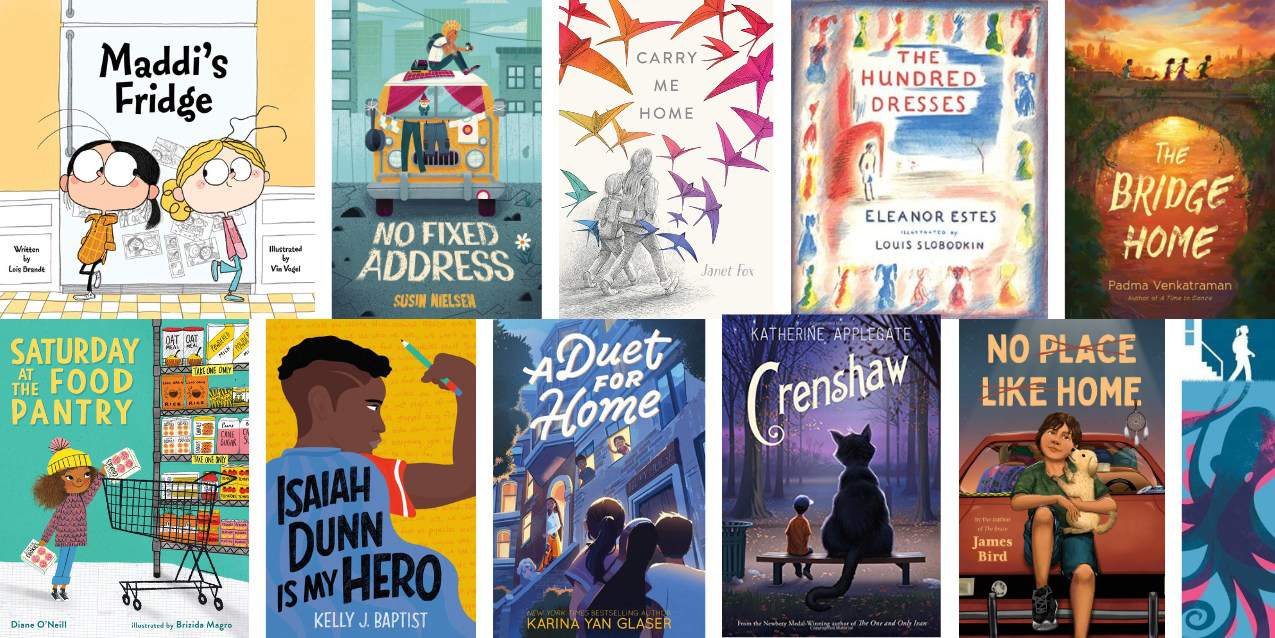
Books for Kids About Poverty & Homelessness
Picture Books About Poverty and Homelessness

Maddi’s Fridge by Lois Brandt, illustrated by Vin Vogel (ages 4+)
Sofia finds out that Maddi’s fridge has no food, but Maddi doesn’t want Sofia to tell anyone. Sofia really wants to help Maddi but how can she?
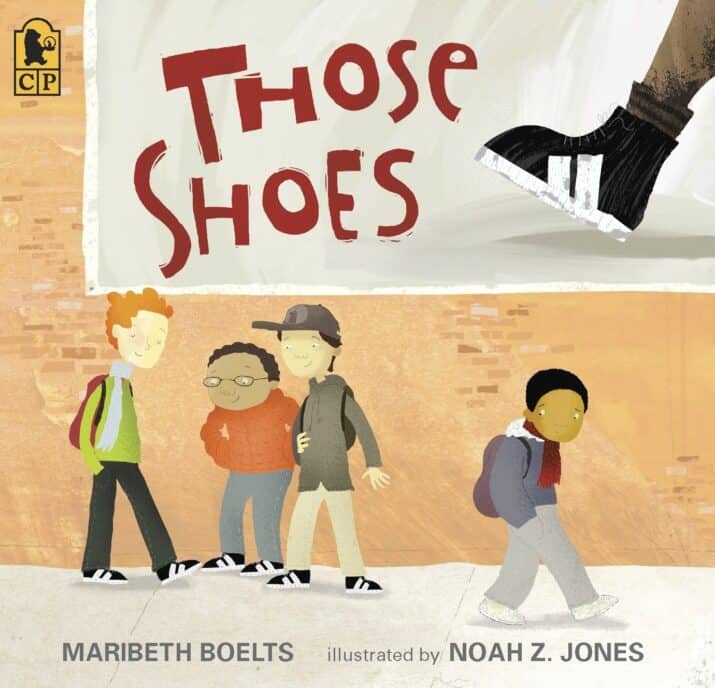
Those Shoes by Maribeth Boeltz, illustrated by Noah Z. Jones
Jeremy wants the black, high-cut sneakers with stripes. But his grandma can’t afford to buy them. When Jeremy’s own shoes fall apart, he buys the high-top sneakers at a thrift store in a too-small size. Those Shoes raises the relatable issue of wanting to fit in and the trickiness when you can’t afford something you really want, as well as brings up the difference between a want and a need.

Yard Sale by Eve Bunting, illustrated by Lauren Castillo (ages 4+)
Callie’s family must sell everything to move to a smaller home. It’s a sad time for them, but this family faces the change with courage and love.

Saturday at the Food Pantry by Diane O’Neill, illustrated by Brizida Magro
Molly’s a little girl with a generous and bubbly personality, even when she and her mom don’t have enough food and go to the food bank. When she’s at the food bank, she colors pictures for the people she meets there. That helps her befriend a classmate who feels embarrassed to be there. Molly reminds her new friend that everybody needs help sometimes and that we can also help others, too.

Last Stop on Market Street by Matt de la Peña, illustrated by Christian Robinson (ages 4+)
CJ and his grandma ride the bus across town and CJ notices differences about the neighborhoods. Caldecott winner!

The Can Man by Laura E. Williams, illustrated by Craig Orback (ages 4+)
Tim starts collecting the cans that the Can Man normally collects. Tim’s taken the homeless man’s only way to make money and he realizes some big truths. It’s a powerful story that shows Tim realizing the world doesn’t revolve around him and that his actions have consequences.

Lunch Every Day by Kathryn Otoshi
This is a story about a boy who, day after day, steals another boy’s lunch. In a surprising turn of events, he gets invited to the boy’s birthday party, and that boy’s mom gently approaches him. In another surprise, the mom tells the boy that she will make him a second lunch. Read between the lines (infer) –what do you notice about the boy’s family life that might make him behave the way he does? Do the mom’s actions surprise you?
Chapter Books and Middle Grade Books About Homelessness and Poverty
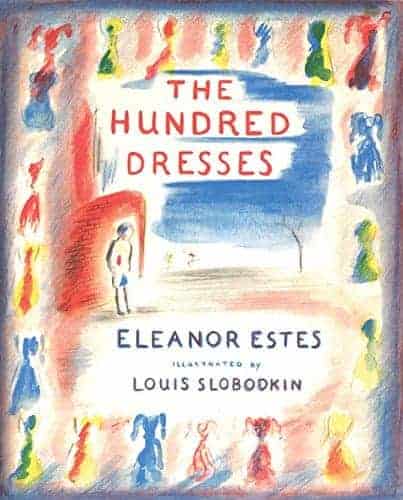
The Hundred Dresses by Eleanor Estes (ages 6 – 9)
Classmates, including Maddie, tease a poor girl in their class, Wanda, who says she has 100 dresses at home. When Wanda disappears, Maddie visits Wanda’s house and discovers the bittersweet truth…Wanda might not have real dresses, but she has drawings of 100 dresses. This is a beginning chapter book for kids about poverty that teaches kindness and empathy.

Almost Home by Joan Bauer (ages 8 – 12)
A great teacher, a rescue dog, and a love of poetry help Sugar face the challenges of homelessness.

Front Desk by Kelly Yang (ages 9 – 12)
Mia and her parents have struggled ever since moving to America from China. When her parents take a new live-in job at a motel, they work around the clock for very little pay. Mia helps out by working at the front desk. She befriends the weekly tenants and uses her English skills to write letters advocating other people in tough spots. This book is more than a memorable coming-of-age immigrant story; it’s also about tolerance and diversity, and as the author says at the end, “what happens when you include [others]…despite all your suffering and heartache…” I loved this story— the writing, the characters, the plot, and the messages of inclusion and determination.

No Fixed Address by Susin Nielsen (ages 9 – 12)
Felix doesn’t want to tell anyone that he’s been living in a van for months and months. His mom, Astrid, is worried about social services taking him, so he keeps quiet even though he really wants a bathroom. His hope is that he can win his favorite TV game show so they’ll finally have enough money to get an apartment. One of the things I loved about this story is how it shows a child’s love for a parent despite all the parent’s flaws–and his mom has many like lying and not holding down a job. It also depicts homelessness as circumstances beyond a child’s control — which is something most kids don’t know or think to consider. This well-written book about poverty and growth mindset is beautiful, important, and highly recommended.

Isaiah Dunn is My Hero by Kelly J. Baptist (ages 9 – 12)
With themes of grief, family, poverty, poetry, the power of writing, and friendship — this beautiful story captures your heart with a struggling, heroic main character whose hopeful journey makes you believe in humanity again. After Isaiah’s dad dies, his mother stops working and drinks too much. The family of three now lives in a smokey motel where Isaiah watches his 4-year-old sister when his mom is passed out. He finds strength and inspiration in his father’s journaled stories about Isaiah Dunn Superhero and eventually, begins to write poems again in his own journal…poems that he and a new friend named Angel sell as a business, money he wants to give to his mom for a new place.

A Duet for Home by Karina Yan Glaser (ages 9 – 12)
In this powerful, hopeful story with complex characters about grief, family, community, and homelessness, June’s family becomes homeless after her dad dies. Despite the shock of their new situation, June finds kindness from many of the people at the shelter, including a music-loving boy named Jeremiah and Abuela, who helps June find viola lessons. June helps organize a protest against new laws forcing homeless people out of the shelters without support. Through many ups and downs, June discovers that home isn’t a place and that family isn’t always blood.

Okay for Now by Gary D. Schmidt (ages 9 – 12)
One of the best books I’ve ever read whose characters I felt deeply connected to… The main character Doug is struggling to read while living in poverty with an abusive dad and older brother. What saves him is connecting to a librarian who shows him Audobon’s bird paintings and how to draw. It’s excellent!!!!
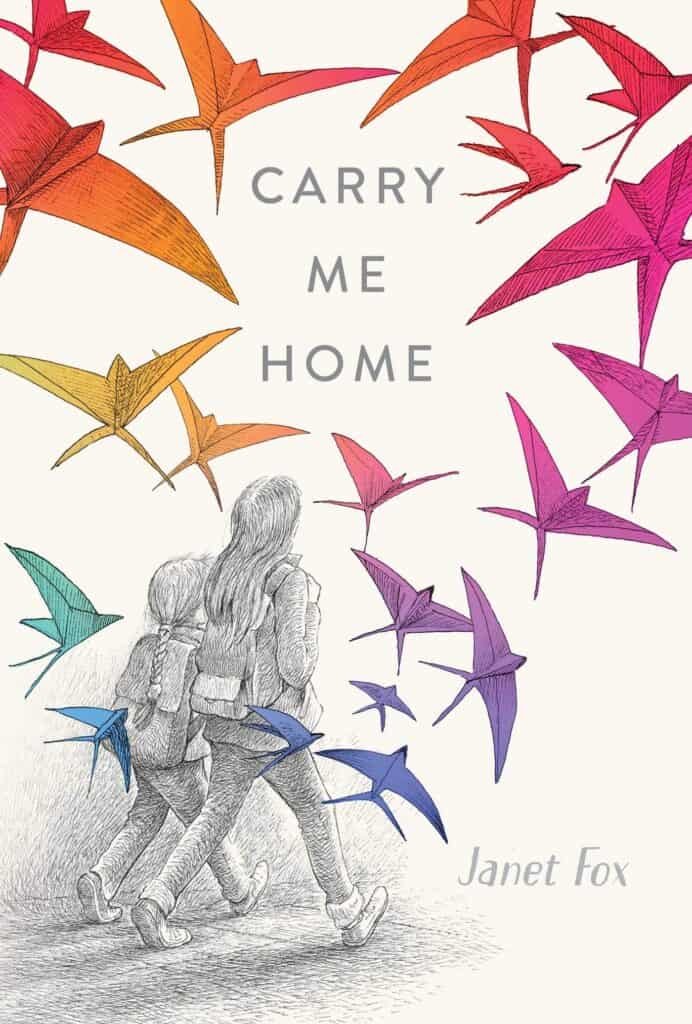
Carry Me Home by Janet Fox (ages 9 – 12)
Fox skillfully transports us into the heart of the main character Lulu who is desperately trying to take care of her little sister after their dad abandons them at the RV park where they’ve been living. Hopefully, she makes paper cranes and wishes that her dad will come back as he has before. They go undiscovered by adults for several weeks, but one day she misses her sister’s pick-up time, Social Services is called, and the truth comes out. When it does, Lulu learns what community means, that adults aren’t the enemy, and that her dad is never left them — he’s been a John Doe in the hospital. This is a moving story of a determined girl facing homelessness with courage.

The Benefits of Being an Octopus by Ann Braden (ages 9 – 12)
This is a well-written story with an emotional poignancy about poverty and unhealthy relationships. Zoey is trying to stay hidden to survive her life. She and her siblings live with their mom’s newest boyfriend in his trailer. She must care for her siblings while her mom works …all the while avoiding making a mess or any noise. A kind teacher at school persists with a reluctant, non-participative Zoey, encouraging her to try debate club. It’s that activity that eventually gives Zoey the courage and perspective to talk to her mom about everything — from her mom’s boyfriend’s belittling to her own friend getting threatened with a gun. That conversation changes everything for their family for the better…

Just Under the Clouds by Melissa Sarno (ages 9 – 12)
This is a coming-of-age story about what makes a home, family, and friends. Cora is responsible for her little sister, Adare, while her mom works. Cora loves climbing and trees but doesn’t love not having a home or any friends. When their mom takes them to stay with an old friend, it finally feels like a home. And she makes a friend at school, one who understands what it’s like to not have a permanent home because she lives in a houseboat. Moving and well-written.

No Place Like Home by James Bird
Beautiful character development, vivid details, and a strong narrative voice draw you into this story about homelessness, Ojibwe culture, growing up, family, and the love of a dog. Based on James’ childhood, Opin is a sweet, hopeful boy who lives with his mom and his older brother in their car, traveling from city to city. He adores his mother, but he’s scared of his angry, violent older brother, who comes and goes as he pleases. When Opin finds a hurt dog, the love of a dog fills a friend void for Opin–until his brother takes the dog away. Despite the challenges of Opin’s life, beauty and joy are threaded throughout this compelling story that is one of the best of 2023. *Sensitive readers, there are a few swear words.

The Bridge Home by Padma Venkatraman (ages 9 – 12)
Set in India, Viji writes this story as letters to her little sister Rukku who has intellectual disabilities, starting with when they run away from an abusive father and sick mother to the big city. There, they meet kind brothers and live with them under a bridge, scrabbling to survive by collecting trash. Their days are hard, but Viji learns how much more capable her sister is than she previously thought. Unfortunately, her sister Rukku gets a terrible cough and fever. Viji might need to trust someone to get Rukku help. It’s an honest, eye-opening story that reveals the plight of many homeless children in India.

Treasure of the World by Tara Sullivan (ages 9 – 12)
An engrossing and unique story about a girl’s struggle to realize her own dreams while still helping her family survive. Ana’s a poor girl living in a small town high in the Bolivian mountains whose feeble economy revolves around mining. When her abusive dad forces Ana’s sickly younger brother into the mines, he doesn’t last long before bedridden with a cough and fever. To help, Ana drops out of school and goes to the mine in his place. Then, after a mine collapse that kills her dad and leaves her brother’s whereabouts unknown, Ana’s life gets even more difficult. She scrambles to find work, thinking her dreams of school and a different life are over. Until she thinks of a way to work and pass school…

How to Steal a Dog by Barbara O’Connor (ages 8 – 12)
Georgina thinks that she can help get them out of living in their car if she can get the reward money for a lost dog. Now she just has to steal a dog. . . This is a sweet children’s book for younger middle grade readers about living in poverty with an unexpected friendship that becomes a lifeline for Georgina.
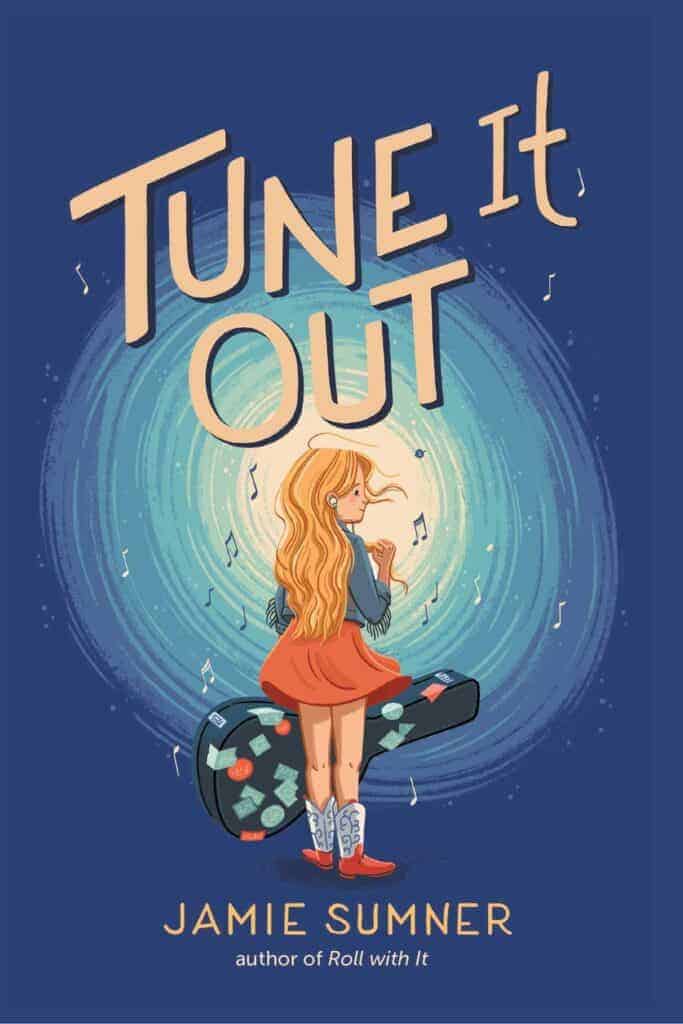
Tune It Out by Jamie Sumner (ages 9 – 12)
This is a beautiful character arc and the most authentic portrayal of SPD in middle-grade literature in an un-put-downable, heartfelt story. 12-year-old Lou and her mom live in a truck. While her mom works as a waitress, Lou hangs out or sings for money, living her mom’s dream, even though Lou dreads performing. After a disastrous driving on her own experience, Lou gets put in foster care with an aunt she’s never met. In her new home, Lou goes to a fancy private school where, after a fire drill meltdown, she’s assessed with Sensory Processing Disorder. She starts to get help from an occupational therapist and a sensory diet, understanding herself better and learning to trust her kind aunt and uncle. Her situation is complicated and imperfect, which feels completely authentic.
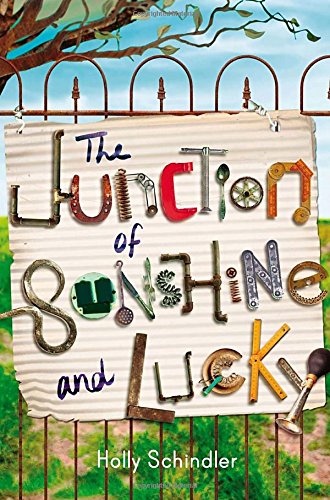
The Junction Between Sunshine and Lucky by Holly Schindler (ages 8 – 12)
Auggie worries that her town’s beautification committee will condemn her grandpa’s unusual house of repurposed objects.

The Same Stuff as Stars by Katherine Paterson (ages 8 – 12)
Angel’s mother abandons Angel and her brother at their ancient great-grandmother’s run-down trailer home. Making her situation more bearable is a mysterious neighbor who teaches Angel about constellations, sparking a passion for astronomy.

Out of the Dust by Karen Hesse (ages 8 – 12)
They’re dirt poor, her mother dies, her father is sick, and the constant dust storms cover the world. Billie Jo narrates it all in free verse and manages to find the grit to keep going.

Homecoming by Cynthia Voigt (ages 12+)
I read this book series in high school & love that it still is relevant today. Dicey’s mom abandons she and her three siblings at a mall forcing the kids to forage for food, hide, and keep going onward as they try to get to a safe place, their great-aunt’s home.

The Dogs of Winter by Bobbie Pyron (ages 8 – 12)
Abandoned at age five, Ivan’s forced to live on the streets, homeless and in poverty. He lives with a pack of dogs, becoming almost as feral as his pack. Like many books on this list, it sad to imagine how hungry his days are and how much he has lost, but it is very worth reading.

Crenshaw by Katherine Applegate (ages 8 – 12)
After having lost their home and living in their van for 3 months, the family falls back into further poverty and is now about to lose their apartment. It isn’t until his imaginary friend Crenshaw shows up and pushes Jackson to speak the truth to his parents that Jackson learns that he’s not facing these challenges alone.

Paper Things by Jennifer Richard Jacobson (ages 8 – 12)
Gage and his little sister, Ari, are moving from one friend’s couch to another, trying to save up enough money for their own apartment. Ari wants to stay with her brother, go to school, do homework, and have enough to eat. But will they make it on their own? Bittersweet and heart-wrenching.

Trash by Andy Mulligan (ages 8 – 12)
Survival means picking through piles of trash. This is, until Raphael finds something making him determined to fix the corruption and injustice in their city.

KEEP READING

Children’s Books About Physical Disabilities

 PARENTING TIPS
PARENTING TIPS







 PREGNANCY
PREGNANCY






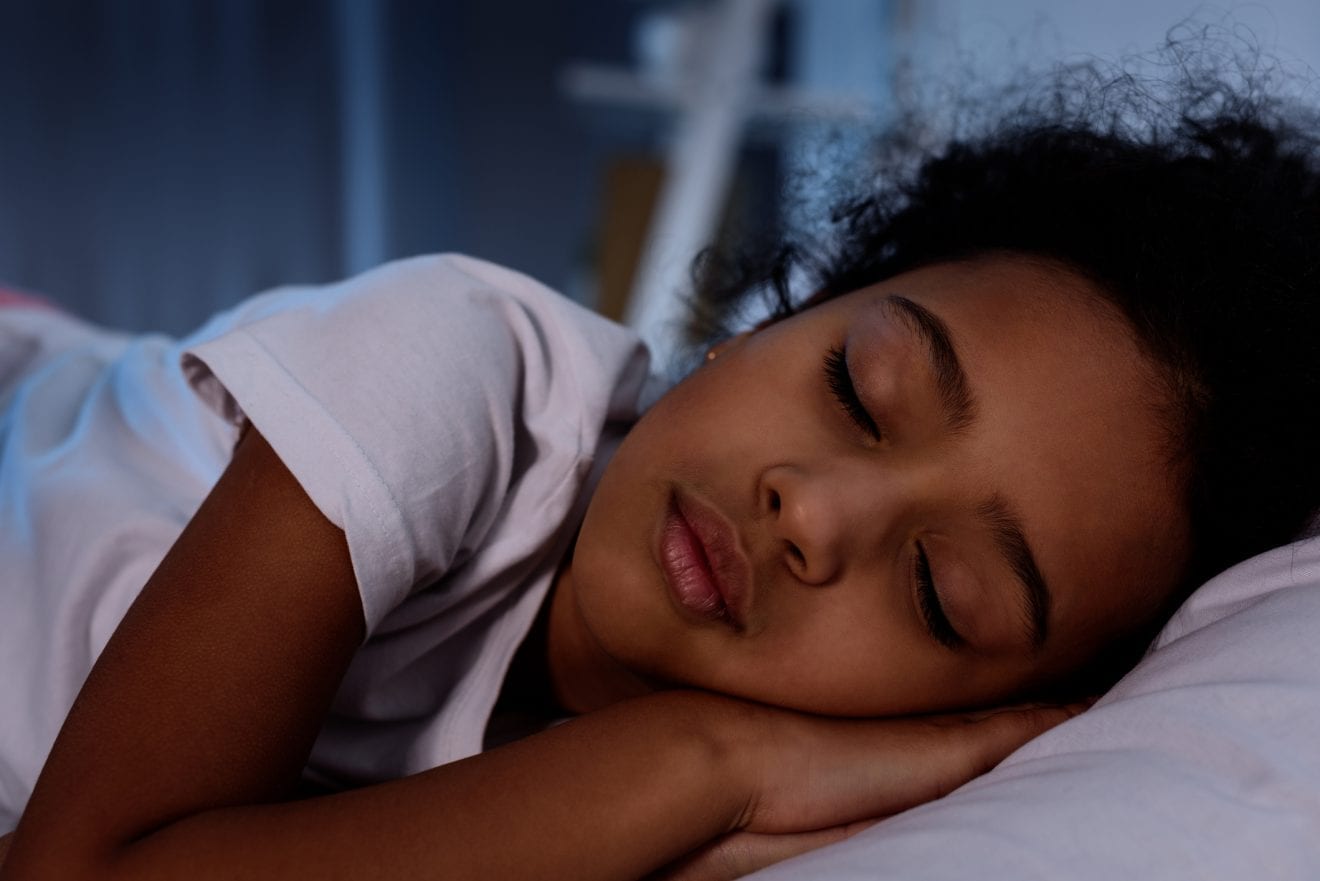

 BABY CARE
BABY CARE








 TODDLERS
TODDLERS








 TEENS
TEENS








 HEALTH CARE
HEALTH CARE




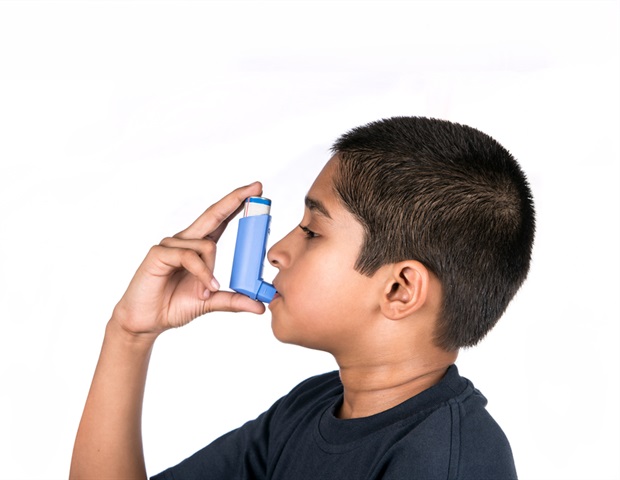


 ACTIVITIES & CRAFTS
ACTIVITIES & CRAFTS








 CONTACT
CONTACT ABOUT
ABOUT

